WWII JAPANESE ARMY SAMURAI MILITIA KATANA SWORD - #17 -
The vast majority of the Samurai Swords found in the United States were brought back as war souvenirs during
and at the end of WWII.
The sword featured here is a Japanese WWII Samurai sword. A Wakisashi type. As used by the Imperial Japanese
Army. The blade is hand made. The Tang has been signed and is also arsenal marked.
The Wakisashi was used as the companion to the Katana. The Wakisashi is the shorter of the two swords, measuring
up to 24 inches in length. It was designed as a weapon for close combat in areas where the space was limited.
Places like rooms in a house were ideal for the use of this sword. The Wakisahi was developed during the
Momoyama period in japanese history.
Samurai swords have quickly become one of the most sought after military collectibles in the field. The beauty,
strength and simplicity in design are highly appealing.
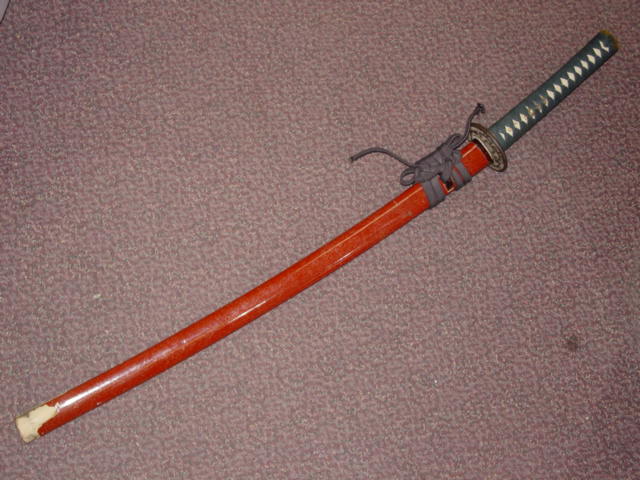
The sword is dressed in traditional attire. Even though the blade is of WW2 production it was not placed in the
standard Japanese Imperial armed forces fittings.
The handle is very nicely wrapped in dark blue cloth. The scabbard is made of wood and is lacquered in red. It has
a crackle design. The blade has a blood groove that extends nearly the entire length of the blade. The blade
measured approximately 26 inches.
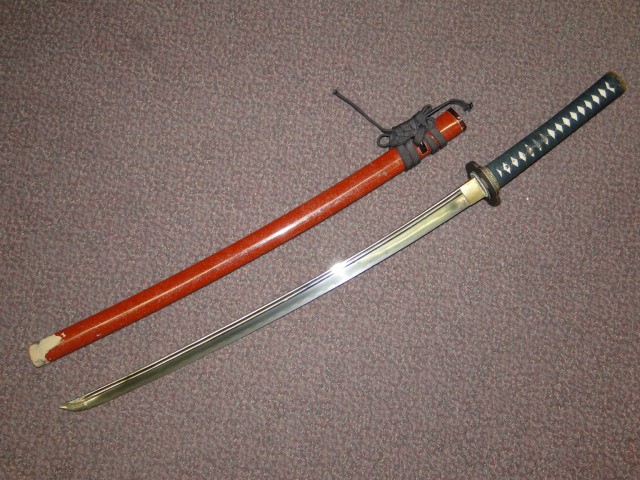
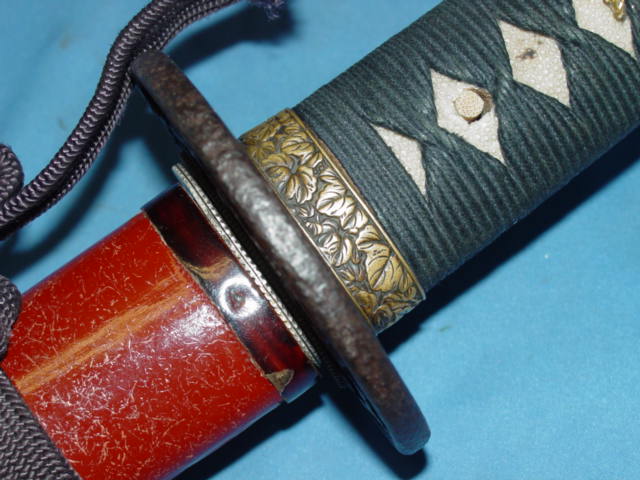
The pommel cap (kashira) matches the design of the base ring (kashira). It consists of a series of leaves. Both
pieces are made of brass and are very nicely executed.
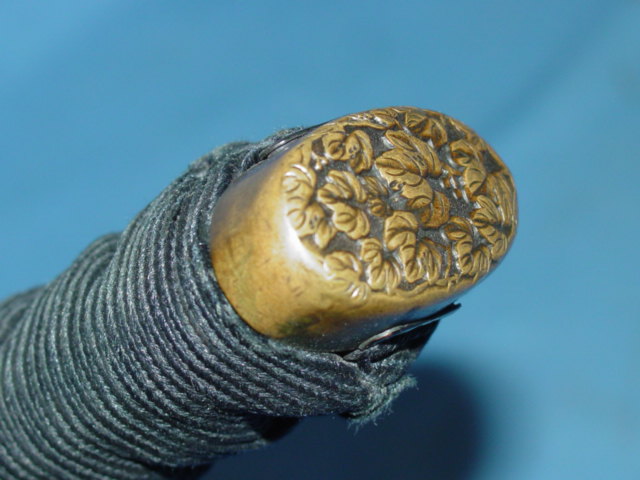
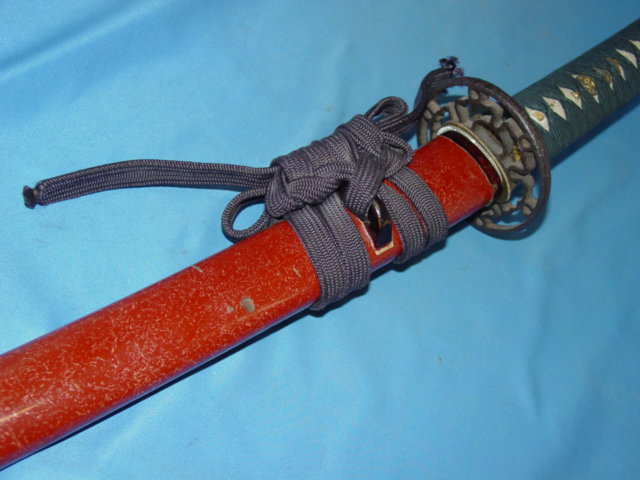
|
This page is a recognition and identification guide for Samurai swords.
Multiple detailed photos of a specific sample are provided. Descriptions point
out clearly defined points that should be noted.
One of the most commonly asked questions is "How much is my Samurai Sword worth?".
A price guide is included here to address this question. The value of the swords is
reviewed over a period of several years. A trend can be observed. The present worth
of the edge weapons in the collector's market is illustrated.
This service is provided free of charge to the visitor/enthusiast courtesy of
MilitaryItems.com,
a company dedicated to the preservation of military history and to providing quality
military antiques and collectibles to museums, institutions and the general public.
|
|
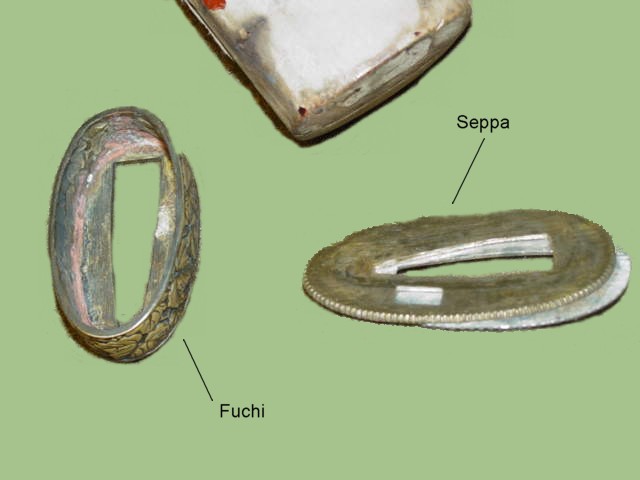
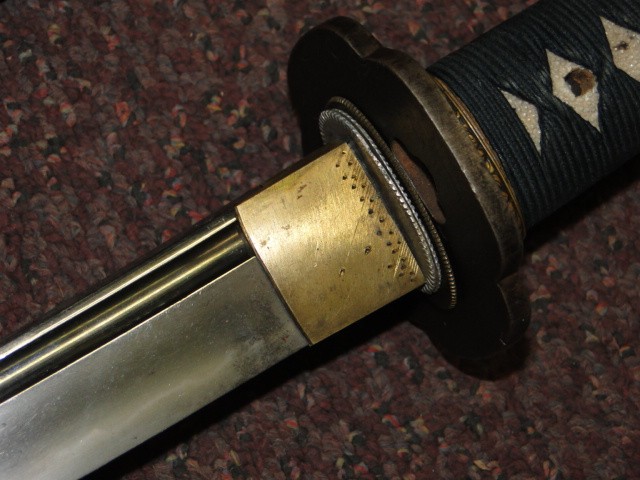
The handle wrapping is very nice and tight. A very desirable condition. The menuki is in the shape of a dragon.
The other side of the handle has a matching one. The ray skin underneath the wrapping remains bright and with a
good texture.
This view provides a look at the various components found near the base of the blade. Each item requires a very
skilled individual (master) to manufacture. The person who forged the blade was not necesarily the person who
created the scabbard, Habaki, Menuki, etc.
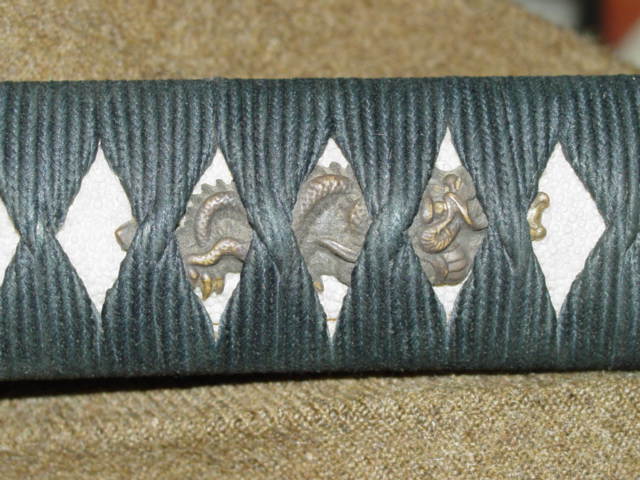
The left side of the photo below shows the Habaki. This was a very important part of the sword. Its wedge
shape help lock the sword to the scabbard. keeping it from falling when the soldier was runing. The sword fit
loosely into the scabbard, preventing the blade from getting scratched when pulled out or placed back in.
The Habaki provided a point by which the sword could be pulled out.
The sword was worn with the curve facing down.
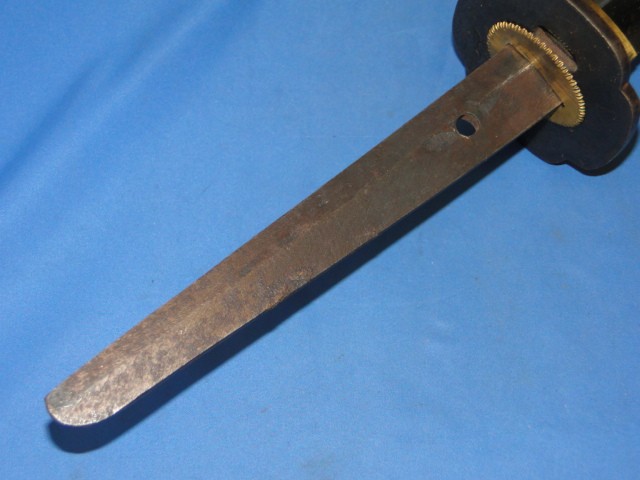
This photo provides a closer look of the tang. The characters are inscribed in a very strong and deep manner.
The information included in the inscriptions is the name of the master who made the sword, the city/school where it
was made, the date in which it was created. It is important to note that not all blades were signed. The
signature indicated that the blade has met the quality standards set forth by the swordsmith.
The round symbol towards the base of the blade is the arsenal marking, also known as the Seki stamp. It indicated that
the blade was produced in a factory during WWII.
The shape and size of the Tang help determine the school that produced the sword.
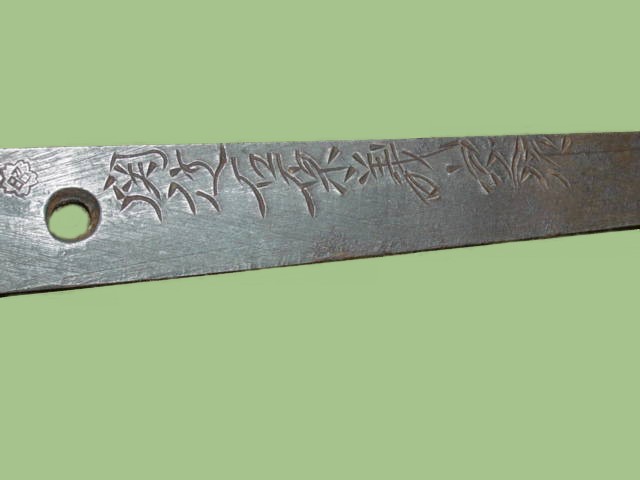
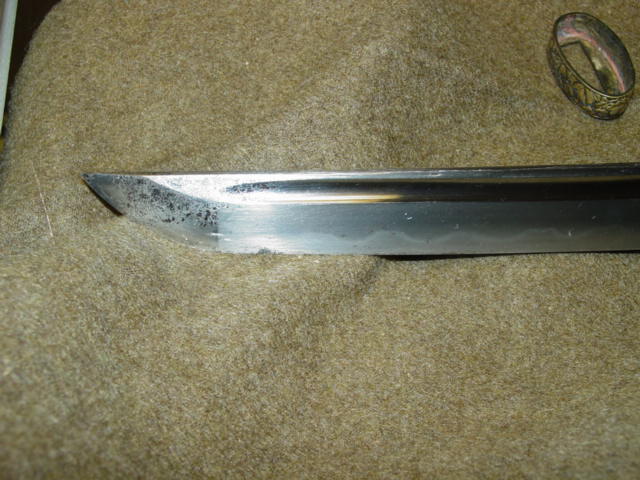
The blade has a visible hammon that extends its entire length.
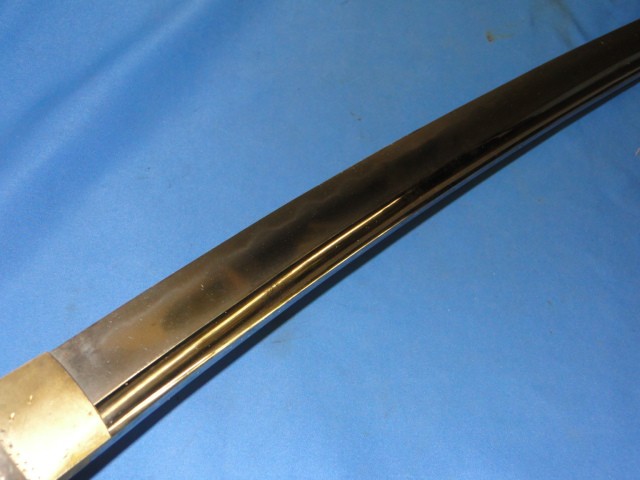
The tsuba is a fine example of an 1800's pattern. Iron construction with a very interesting design. Even though
the sword was issued during WWII, it was not uncommon to have older parts fitted to it. The Tsuba served the
purpose of protecting the hand of the warrior from an incoming blade as well as the aesthetic value.
Some enthusiasts dedicate themselves to collecting exclusively Tsubas.
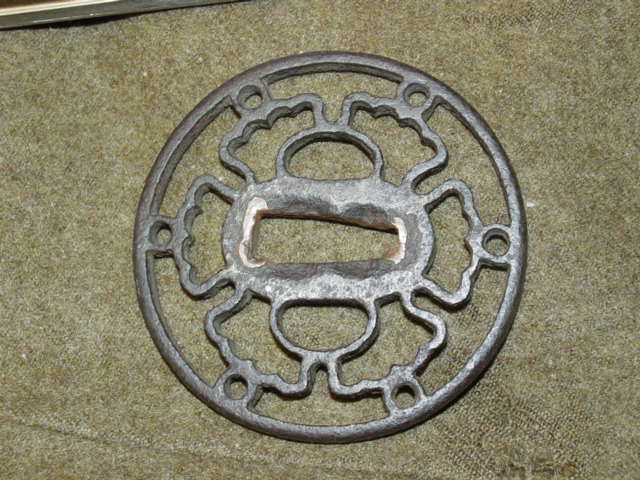
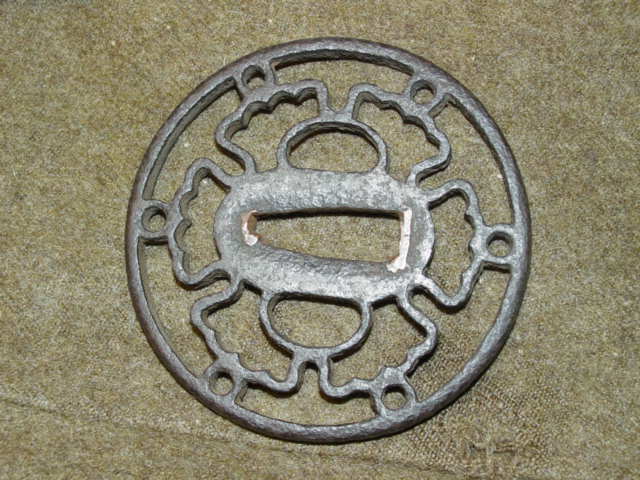
This Samurai Sword may be currently reproduced.
It is becoming more difficult to be able to tell the fake ones from the real ones because
the quality of the reproductions is improving. The collector must become familiarized with
the construction style and materials employed in the manufacturing of this item.
Attention to the details is critical in order to be able to determine the authenticity of
the collectible.
If you have an interest is seeing other Japanese Samurai swords, you can do so by going to our
Japanese Samurai Swords Price Guide
identification guide. Where we cover Samurai swords from all periods.
| 




